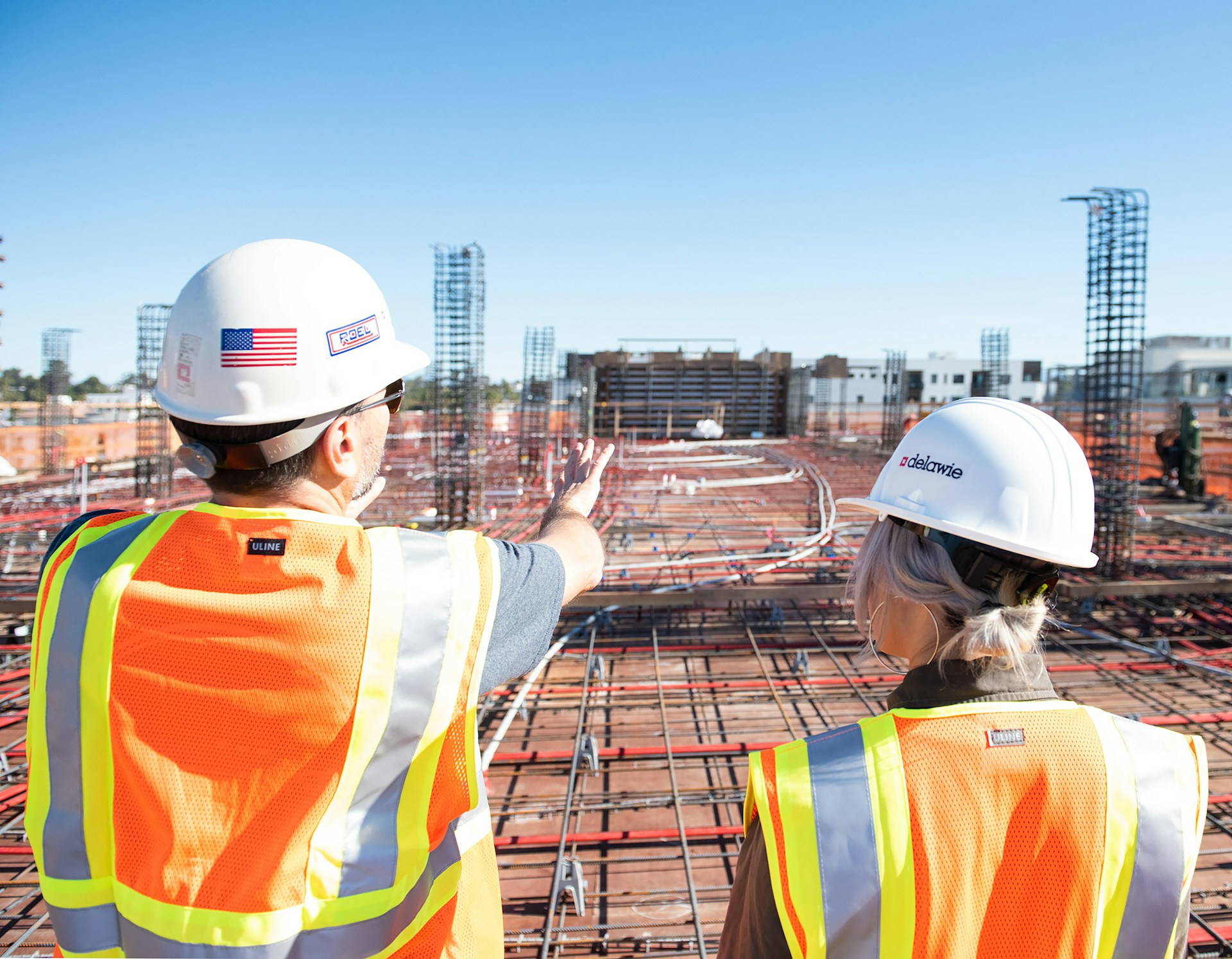Technology plays a vital role in enhancing collaboration within construction projects. A robust construction management software will streamline engagement with stakeholders through tier-based access and user management capabilities. Key processes, such as procurement, financial management, planning, and site monitoring, can be made significantly more innovative through technology-based collaboration.
Technology also strengthens team communication by providing a singular platform for updates, reporting, data management, and documentation. Remote workers, site teams, inspection analysts, contractors, and other entities can easily engage with each other via construction project collaboration tools.
Construction firms developing digital twins for large-scale projects can also adopt a collaboration-driven solution to integrate insights from various business units seamlessly. Developers can also track all concurrent and past conversations via online technology solutions and receive comprehensive overviews of all active workflows.
Advances in BIM boosting collaboration
Project planning is a critical industry area that is being transformed through the integration of advanced BIM solutions. BIM adoption is at an all-time high, with close to 75% of firms experiencing positive ROI with BIM integration. 4D and 5D BIM add a layer of collaborative planning into structural design, embedding various stakeholder inputs for iterative innovation. When BIM is adopted throughout the planning stages of projects, it can boost team productivity via increased collaboration.
BIM also enhances coordination, scheduling, and subsequent engagements with vendors. Through the standardized and process-based approach provided by BIM, developers can communicate their requirements seamlessly. The right BIM solution will enable smarter scheduling of site work based on approved layouts from structural engineering, cost, and timeline perspective. BIM solutions are also developed to be scaled up seamlessly, thereby simplifying the communication of critical requirements.
Driving collaborative site progress monitoring
Technology solutions provide remote access to worksites via integrated monitoring tools. Through visual mapping via drones, robotics, or IoT sensors, developers can gain greater visibility into complex sites. Developers are also able to compare BIM data with site progress insights to ensure compliance with outlined layouts. They can collaborate, in real-time, with site teams and contractors to support or course-correct at any point through project management software.
Site progress monitoring is also mapped comprehensively within a progress monitoring software, which helps reduce the risk of overruns. Teams can optimize RFIs based on execution stages through the streamlined communication tools provided by construction management solutions. Daily progress reports can also be generated, shared, and approved synchronously within the construction software as well.
Data-driven environment for inclusive decision making
A key advantage that technology offers within the construction ecosystem is strategic access to quality data. By leveraging planning, estimate, budgetary, and projection data within construction management software, teams can collaborate better on planning and execution. Managers gain access to more data-driven tools for inclusive decision making. With larger projects typically taking 20% longer to finish than scheduled, data-driven collaboration can significantly improve timeline adherence as well.
Collaboration is also significantly supported through structured access to all project data. Developers can empower teams to rely on a unified source of data truth while having stakeholders collaborate by leveraging a more dynamic data warehouse. Managers can empower procurement teams with data-driven estimates while optimizing site schedules through smarter projections enabling agile delivery.
Role of technology in enabling collaborative inspections
Key inspection processes can be significantly enhanced via increased collaboration. Teams can engage with each other at scale when interacting through a singular platform. All communication and data points are stored seamlessly within cloud-based construction project collaboration tools, such as Zepth. Additionally, developers can track communication history, metadata, and key progress updates for greater transparency.
Data from various equipment and site sensors can also help track the performance and health of site assets. This data can be shared with relevant teams for follow-ups, secondary inspections, and remediation. Through the implementation of construction management software, developers can share quality analysis data with site teams, who can then engage further with contractors and vendors. The streamlining of data sharing and communication via technology significantly improves collaboration.
Strengthening execution through cloud-based engagement
The leading construction project management software have integrated video calling and online meeting features for larger teams. They ensure that teams can seamlessly communicate from any location while innovating on execution methodologies and instantly reporting anomalies. Data can also be accessed and shared during video chat sessions, which boosts real-time efficiencies.
Project teams can track minutes of meetings, which helps in structuring and optimizing conversations. This is a critical feature that many of the top construction management solutions offer, as it enhances collaboration-driven outcomes. Teams can also prepare task management schedules within meeting solutions and collaborate on finalized execution strategies. The centralization of collaboration through these technology solutions is one of the most vital reasons behind their rise in adoption.




